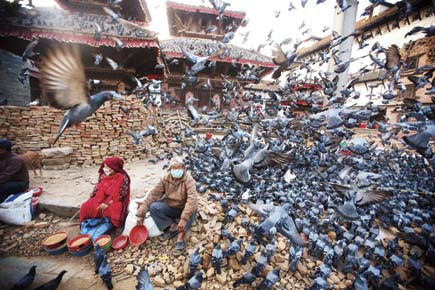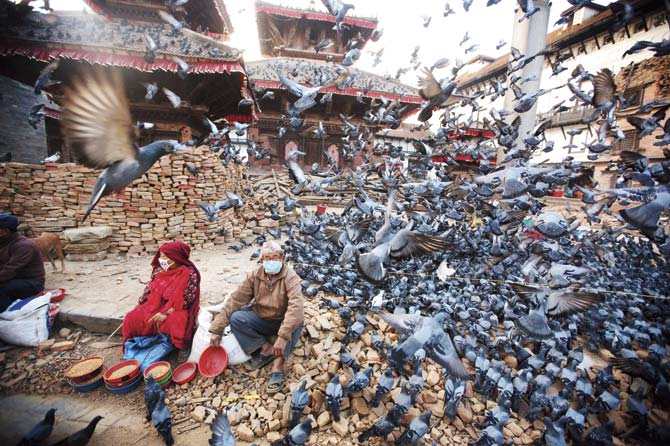As Nepal picks up the pieces after the killer earthquake; loss of life and property has not been fully comprehended. Putting perspective to the immeasurable destruction of its heritage sites, and the way forward is Lisa Ackerman, Executive Vice President, World Monuments Fund. This global non-profit organization is dedicated to preserving and protecting endangered ancient and historic sites around the world

Q. What is the rough estimate of the damage to Nepal’s heritage sites?
A. I don’t know if anyone can provide an answer to that question at the moment. Thousands of buildings have been damaged ranging from officially designated heritage sites to people’s homes, sites of worship, not to mention, places of business. As the emergency relief situation subsides, it will be possible for local authorities to get a clearer sense of the magnitude of loss.

Pigeons fly around damaged buildings in Durbar Square, a UNESCO world heritage site that was badly damaged by the earthquake, in Kathmandu, Nepal. Pic/AFP
ADVERTISEMENT
Q. In what capacity can the World Monuments Fund (WMF) step in to restore the many heritage sites that have been destroyed in Nepal’s earthquake?
A. WMF hopes to raise funds to assist organizations such as Kathmandu Valley Preservation Trust in the rebuilding efforts for significant heritage sites that have been damaged. For the 50 years in which WMF has been operating, we have stepped forward in this way on many occasions. WMF assisted after the floods of 1966 in Venice; after the earthquakes in Haiti and Japan a few years ago; and after Hurricane Katrina in New Orleans. We consider disaster recovery to be an important area of emphasis for the organization.
Q. As we speak, what are the steps being taken to rebuild these structures? How much estimated time will be needed to put the pieces together?
A. At present, the work locally is to assure public safety. Thus, buildings that were damaged but are still standing are being stabilised with emergency, temporary measures to prevent further loss and protect the lives of those in the area. Local heritage professionals as well as many international volunteers are carrying out rapid condition surveys. The work of organizations such as UNESCO (United Nations Educational, Scientific and Cultural Organization), ICOCMOS (International Council on Monuments and Sites), and ICORP (International Scientific Committee on Risk Preparedness) has been noted in the press. The rebuilding will come in the near future. While I have no personal knowledge of how much time will be needed, experience tells us that much can happen quickly and then conservation efforts could go on for many years in the future depending on financial sources available.
Q. What does the destruction of heritage sites mean for Nepal’s population and general mindset?
A. We are resilient in surprising ways at times of crisis. Nepal depends on many heritage sites for worship, education and tourism income. The devastation of the earthquake is broad. Many people have lost their homes, their businesses, not to speak of the loss of friends and family. I can only imagine the despair felt by many. At the same time, there is clearly hope for the future. The people of Nepal have faced tragedy in the past and have recovered and thrived. We must all believe that Nepal will emerge from this crisis.
Q. How can the international community, including India, help salvage these revered sights and work together to restore these sites alongside helping the public in general?
A. ICOMOS India has been actively soliciting support and offering technical advice. The international heritage community has been actively communicating via email, websites, and social media about the crisis. People are willingly sharing information about heritage sites, their conditions, and plans for implementing emergency protective measures. There is always more to do, but I think we can be proud of the fact that the systems and agencies in place to respond are doing so and working hard to set high standards for demonstrating concern and action.
Q. What lessons, if at all, can be learnt from this human tragedy?
A. The best protection against the next crisis is constant maintenance, repair and monitoring of historic structures. No one knows what the next crisis will be so our best defence is being as prepared as possible by assuring buildings are in good condition. A natural disaster may still fell them, but we will know that we have done everything possible to stem the loss when the next crisis hits.
 Subscribe today by clicking the link and stay updated with the latest news!" Click here!
Subscribe today by clicking the link and stay updated with the latest news!" Click here!







